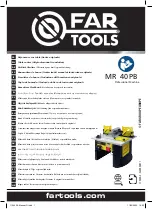
130
Configuring SNMP notifications
The SNMP Agent sends notifications (traps and informs) to inform the NMS of significant events,
such as link state changes and user logins or logouts. Unless otherwise stated, the
trap
keyword in
the command line includes both traps and informs.
Enabling SNMP notifications
Enable an SNMP notification only if necessary. SNMP notifications are memory-intensive and might
affect device performance.
To generate linkUp or linkDown notifications when the link state of an interface changes, you must
perform the following tasks:
•
Enable linkUp or linkDown notification globally by using the
snmp-agent trap enable standard
[
linkdown
|
linkup
] * command.
•
Enable linkUp or linkDown notification on the interface by using the
enable snmp trap updown
command.
After you enable notifications for a module, whether the module generates notifications also depends
on the configuration of the module. For more information, see the configuration guide for each
module.
To enable SNMP notifications:
Step
Command
Remarks
1.
Enter system view.
system-view
N/A
2.
Enable SNMP
notifications.
snmp-agent
trap
enable
[
configuration
|
protocol
|
standard
[
authentication
|
coldstart
|
linkdown
|
linkup
|
warmstart
] * |
system
]
By default, SNMP
configuration notifications,
standard notifications, and
system notifications are
enabled. Whether other
SNMP notifications are
enabled varies by modules.
3.
Enter interface view.
interface interface-type interface-number
N/A
4.
Enable link state
notifications.
enable snmp trap updown
By default, link state
notifications are enabled.
Configuring the SNMP agent to send notifications to a host
You can configure the SNMP agent to send notifications as traps or informs to a host, typically an
NMS, for analysis and management. Traps are less reliable and use fewer resources than informs,
because an NMS does not send an acknowledgment when it receives a trap.
Configuration guidelines
When network congestion occurs or the destination is not reachable, the SNMP agent buffers
notifications in a queue. You can set the queue size and the notification lifetime (the maximum time
that a notification can stay in the queue). A notification is deleted when its lifetime expires. When the
notification queue is full, the oldest notifications are automatically deleted.
You can extend standard linkUp/linkDown notifications to include interface description and interface
type, but must make sure the NMS supports the extended SNMP messages.
To send informs, make sure of the following information:
•
The SNMP agent and the NMS use SNMPv2c or SNMPv3.
Summary of Contents for FlexNetwork 10500 SERIES
Page 224: ...213 ...
Page 311: ...300 Now the system can record log information to the specified file ...
















































